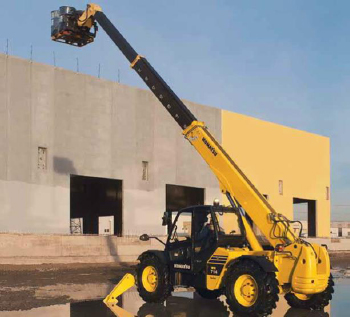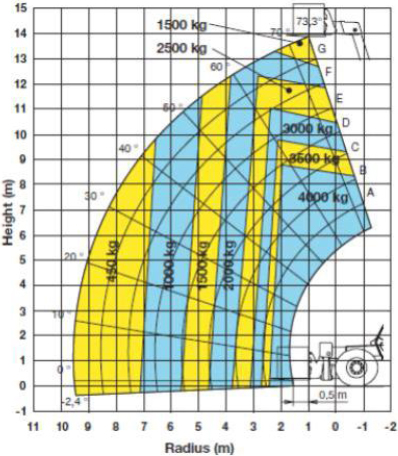J. C. Bamford Excavators Ltd v Manitou UK Ltd
| Jurisdiction | England & Wales |
| Judge | Hacon |
| Judgment Date | 04 July 2022 |
| Neutral Citation | [2022] EWHC 1724 (Pat) |
| Court | Chancery Division (Patents Court) |
| Docket Number | Case No: HP-2017-000027 |
[2022] EWHC 1724 (Pat)
HIS HONOUR JUDGE Hacon
Case No: HP-2017-000027
Case No: HP-2018-000039
IN THE HIGH COURT OF JUSTICE
BUSINESS AND PROPERTY COURTS OF ENGLAND AND WALES
INTELLECTUAL PROPERTY LIST (Ch.D)
PATENTS COURT
Royal Courts of Justice, Rolls Building
Fetter Lane, London, EC4A 1NL
Michael Silverleaf QC and Tim Austen (instructed by Baker & McKenzie LLP) for the Claimant
Brian Nicholson QC and Kyra Nezami (instructed by Marks & Clerk Law LLP) for the Defendants
Hearing dates: 15–18 and 24–25 November 2021
Approved Judgment
I direct that pursuant to CPR PD 39A para 6.1 no official shorthand note shall be taken of this Judgment and that copies of this version as handed down may be treated as authentic.
HIS HONOUR JUDGE Hacon
Introduction
The claimant (“JCB”) and the defendants (“Manitou”) are longstanding rivals in the European market for construction and agricultural vehicles. At issue in this case are vehicles known as telehandlers. They emerged in the 1970s as modified forklift trucks and their success has led to their forming a significant and distinct market sector of their own.
Telehandlers have a four-wheel chassis, a cab for the operator and a longitudinal arm which can be raised or lowered and extended beyond the front of the chassis. The arm is used to lift and move loads. Telehandlers have become versatile workhorses in the agricultural and construction industries. In the construction industry they are typically used to move palletised loads, loose material such as soil or aggregate, or to carry hanging loads on a hook. They have a longer reach than a forklift truck and can be used in terrain that would be inaccessible to a conventional forklift truck. They have largely superseded tractor mounted hydraulic loaders for agricultural use such as stacking bales and the loading and shovelling of grain, silage and manure, being more flexible and having greater lift capacity and reach.
This is a telehandler sold by Komatsu Ltd, a company which competes with both JCB and Manitou:

The arm – shown here extended with a basket load at the end – plays an important part in the inventions claimed in this case. It was sometimes referred to as a boom, in the patents it is called a “load handling apparatus”. I will for the most part use the term “arm”.
JCB is the owner of European Patent Nos. 1 532 065 B2 (“EP 065”), 2 263 965 B9 (“EP 965”) and 2 616 382 B3 (“EP 382”) and UK Patent No. GB 2 390 595 B (“GB 595”), collectively “the Patents”. JCB alleges that the Patents are infringed by Manitou's marketing of certain models of their telehandler. Manitou has counterclaimed for revocation of the Patents.
Michael Silverleaf QC and Tim Austen appeared for JCB, Brian Nicholson and Kyra Nezami for Manitou.
The Patents in summary
EP 065 and GB 595
EP 065 and GB 595 were treated at the trial as if they were the same. They share a priority date of 12 July 2002. They cannot be identical (see s.73(2) of the Patents Act 1977 (“the 1977 Act”)) but differences were irrelevant. Like the parties I will almost always refer only to EP 065.
Drivers of telehandlers know that under certain circumstances the vehicle will become unstable and tip forwards on the axis of the front wheels, raising the rear wheels off the ground. The load at the end of the arm creates a force tending to tip the telehandler in the direction of the load. The mass of the vehicle provides a countervailing or restoring force. In this context, the “tipping moment” is the restoring force minus the tipping force. As the tipping moment approaches zero the vehicle becomes unstable.
The invention claimed in EP 065 was given the shorthand name “soft-stop”. A control system senses the approach of the tipping moment limit and slows the operation of the arm, bringing it to a complete stop. This provides an appropriate safety margin. The soft-stop mechanism prevents an abrupt halt to the movement of the arm and the consequent inertial shock, itself liable to tip over the vehicle under certain conditions. The soft-stop allows a reduction in the safety margin and thereby a higher range of permitted movement of the arm.
EP 965
EP 965 has a priority date of 19 June 2009. It claims a further safety feature: a method of operating a telehandler which includes sensing the travelling speed of the vehicle and above a threshold speed disabling the control system that limits movement of the arm.
EP 382
EP 382 has a priority date of 14 September 2010. Again, it claims a safety feature limiting movement of the arm. The safety concern addressed is the greater potential instability of the machine when the arm is at certain angles. The threshold for limiting arm movement is relatively restrictive when the arm is at such angles and more permissive at other angles. In other words, the threshold varies according to arm angle so that the safety margin is appropriate to the angle.
Other vehicles
The safety systems of the patents in suit are not restricted to use with telehandlers; the patents are drafted to allow their application to other machines of a broadly similar type. Discussion at the trial was mainly centred on telehandlers but such other types of machine were known at the earliest priority date. These were the most relevant:
(1) Mobile cranes, in particular those with rotating turrets.
(2) Mobile work platforms. These are sometimes called personnel work platforms. The platform is at the end of an arm, commonly a rotatable arm, on which one or more individuals can stand and which is raised and extended so that the individuals can reach a working location. A cherry-picker is an example.
(3) Forklift trucks. These were either of a type designed to move on a flat surface such as a warehouse floor, or of a type used on rough terrain with wheels resembling those of a tractor.
(4) Excavators, i.e. large vehicles with a bucket at the end of the arm, having wheels or caterpillar tracks, used for excavation and demolition.
The skilled person
The parties were agreed that the addressees of all the patents in suit were designers of hydraulic control systems for telehandlers, and that customarily such persons operated within a team led by a lead engineer. It was common ground that the lead engineer can be taken as a proxy for the team as a whole, so I will refer to the skilled person, singular. He or she would have experience extending beyond the vehicles' hydraulic systems to include their control systems generally.
Common general knowledge
The patents in suit between them have three priority dates: 12 July 2002, 19 June 2009 and 14 September 2010. The state of the art can be viewed in annual terms and it was agreed that there was no change of any relevance between 2009 and 2010. The common general knowledge (CGK) was considered as of 2002 and 2009.
The experts agreed that the following matters were part of the CGK in 2002:
(1) Sudden changes to the speed of the arm were to be avoided, especially near the machine's tipping point. The shock of an abrupt stop in the motion of the arm could cause instability.
(2) The tipping moment of a telehandler was conventionally measured using a strain gauge on the rear axle. As the tipping point is approached, the force exerted by the mass of the vehicle on the rear axle decreases until, at the tipping point, it is zero.
(3) Longitudinal load moment indicators (“LLMIs”) had been fitted to telehandlers since the mid-1970s. These alert the operator when the machine is close to and/or has exceeded certain stability thresholds. Visual signals, typically using a traffic light sequence of green, amber and red, could be used. In addition or alternatively there could be a sound alarm when nearing the point of instability.
(4) When a telehandler was used on rough terrain, LLMIs tended to supply unnecessary warnings that were ignored by operators.
(5) There had been a regulatory requirement for many years that each telehandler should have a load chart specific to the make, model and specification of the vehicle. A load chart indicates the safety limits of the vehicle, taking into account arm angle, arm extension and the load. This is an example referred to by the experts in evidence:

(6) The limits shown on the load chart were derived from a document referred to as EN 1459, a European standard in force at the relevant time, set by the European Committee for Standardisation. Unlike LLMIs, the limits set in the load chart were to be strictly observed as the operating limits within which the vehicle would remain stable. They were set by reference to a static vehicle and did not directly address limits for a telehandler in motion, although they provided some indication and therefore had application in that regard. Unlike LLMIs, they took into account lateral stability, providing what was sometimes called the “operating envelope” of the machine.
(7) Before 2002 systems had been developed and used to prevent movements of the telehandler beyond thresholds which, if passed, would threaten stability. These were known as longitudinal load moment control systems (“LLMCs”). Sensors in the machine detect the speed of its movement, arm angle about a horizontal and vertical axis, arm extension, load carried, the angle of the entire machine relative to the horizontal (i.e. whether on a slope) and other data. An electronic control unit processes the data and generates output signals which limit or control the motion of the arm. In 2002 LLMCs in use caused an abrupt stop in motion.
JCB asserted that although LLMCs were known in 2002, they were not part of the CGK; Manitou said that they were. There were examples given in evidence which dated from the 1970s and 2001. I find that by July 2002...
To continue reading
Request your trial-
J.C. Bamford Excavators Ltd v Manitou UK Ltd
...in open court, but parts of the hearing were in private. 4 The judge held for the reasons given in a judgment dated 4 July 2022 [2022] EWHC 1724 (Pat) (“the Substantive Judgment”) that three of the patents were invalid, but not EP 382. He also held that EP 382 was infringed by Manitou's co......

